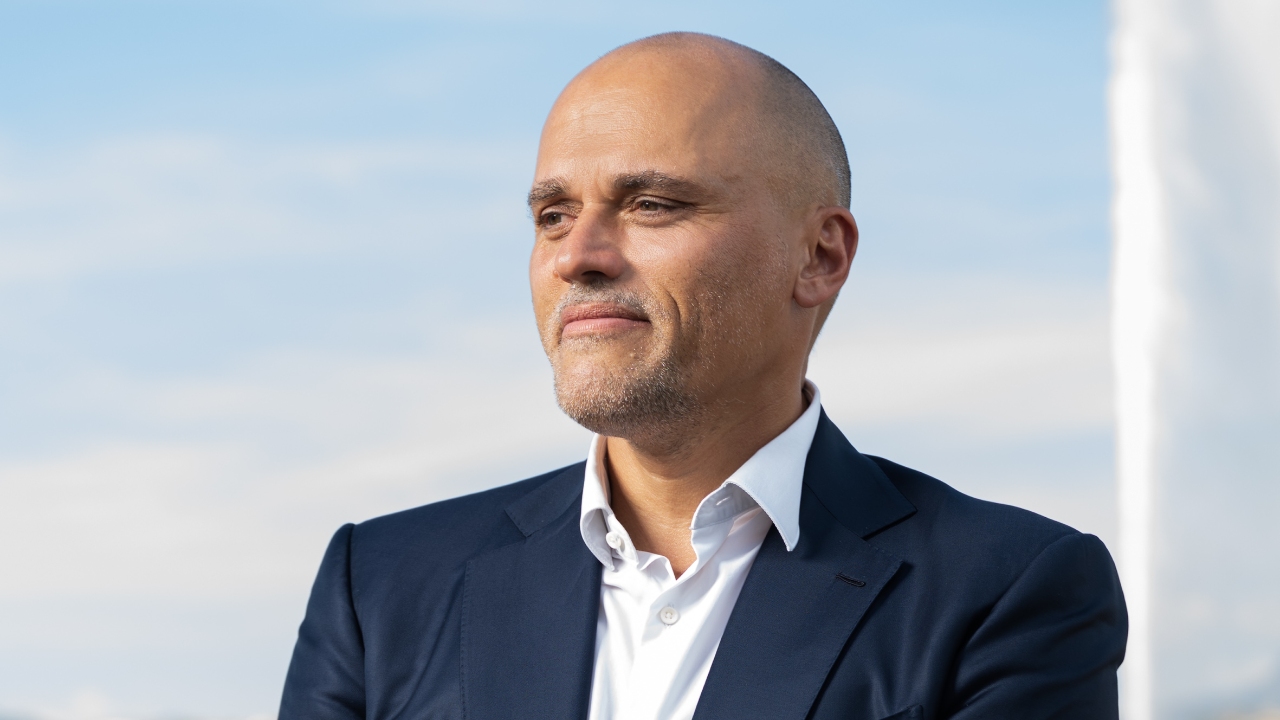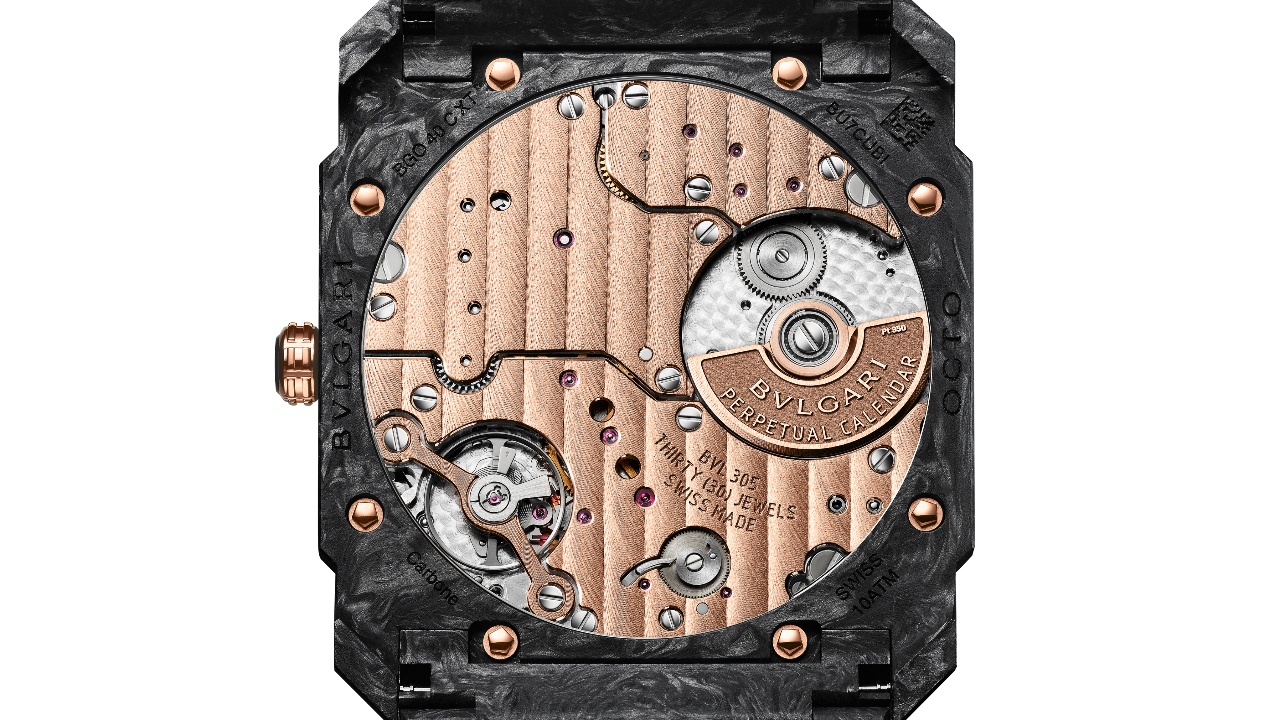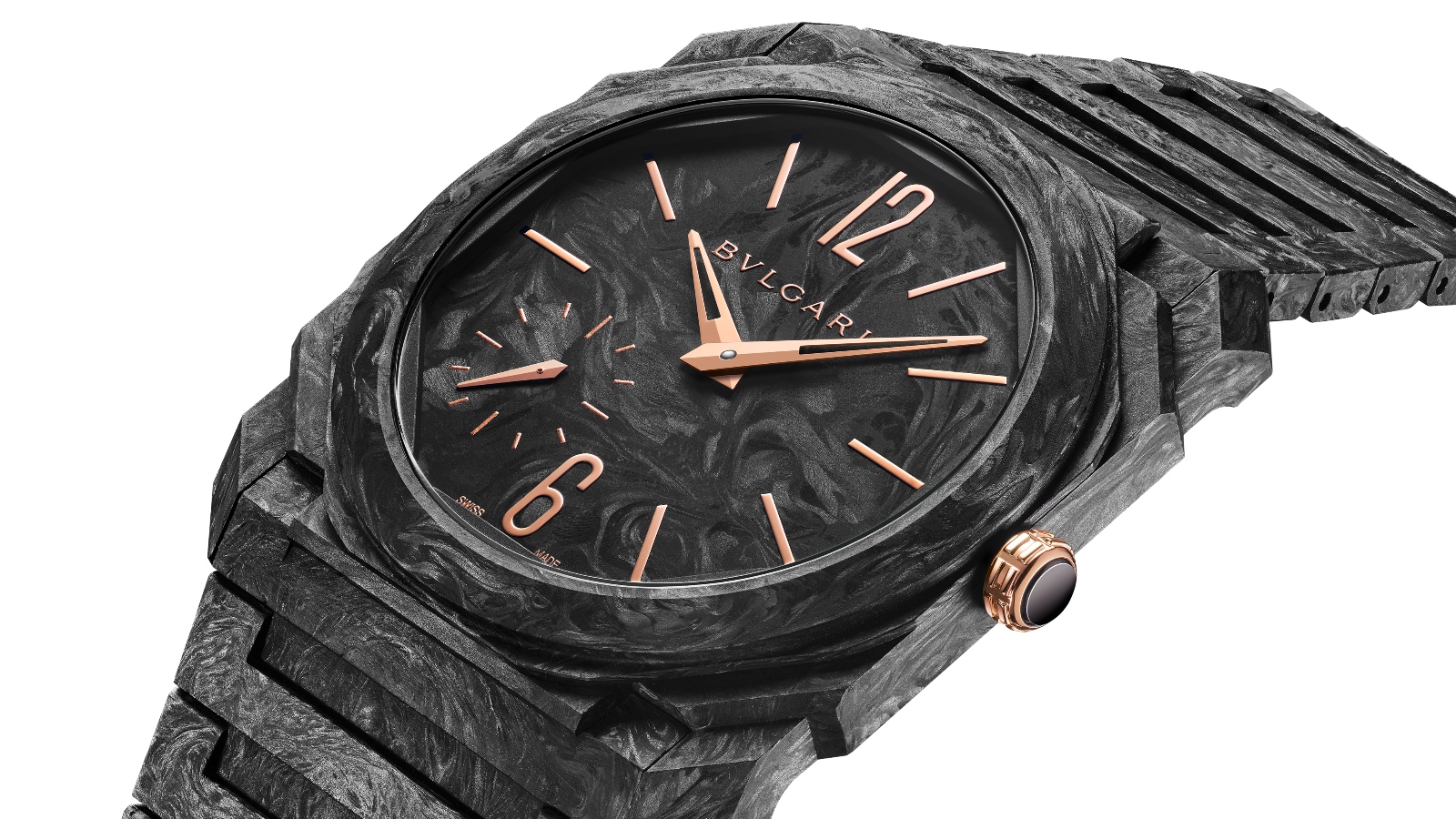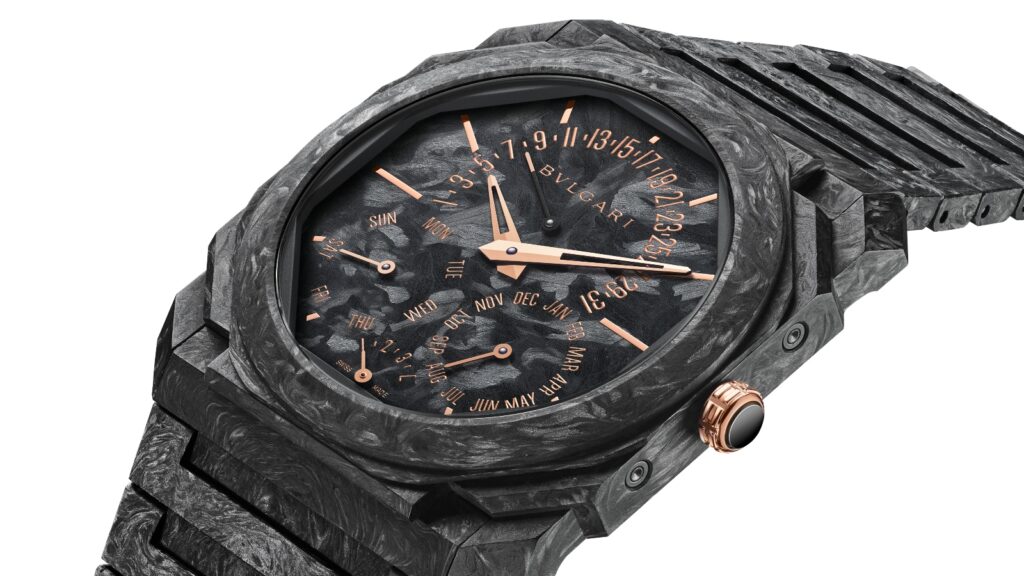“You know, we love to work on monochromatism,” says Antoine Pin, the managing director of Bulgari’s watch division. “This is born from the fact that there is a necessary balance in the eyes of Fabrizio [Buonomassa Stigliani, Bulgari’s product creation executive director] between monochromatism and the complexity of the structure itself. The 110 facets of the Octo Finissimo is a very complex architectural piece. The monochromatism sort of flattens this complexity. Conversely, titanium—which we’ve used from the beginning—is not perfectly even due to its nature, and it brings some complexity to the simplicity of the monochromatism. So you have the complexity of the structure, the simplicity of the monochromatism, and the complexity of the material. This paradox eventually builds a product that is extremely beautiful, extremely elegant, and extremely balanced. It’s a balance made of contradictory forces.”

This is the philosophy that has contributed to the unbridled success of the Octo Finissimo, which was first introduced in 2014. A quintessential expression of cutting-edge ultra-thin watchmaking and contemporary Italian design, it has been seen in varying guises since—some conventional, some more daring. One of its latest expressions is more of the latter—the Octo Finissimo CarbonGold, available as a perpetual calendar and a small seconds automatic (RM116,000). The ‘gold’ part is expressed in the hands, indicators, and crown; most of everything else, including the dial, case, and bracelet, is in a monolithic carbon material that makes for a simple but striking contrast. It is the sort of combination that the house is no stranger to. “The appetite for materials and the way to work with them is what artists do—and what jewellers do,” Pin explains. “It’s an emotion from an effusion of colours and materials. And clearly this is something that Bulgari has always been about.”

The case material is technically a composite, consisting of more than 90 per cent carbon with a few other polycarbonate-like additives. The construction method involves drawing it into a thread, weaving it together, and then compressing it. This results in its uneven swirl-like patterning, which is unique to every timepiece. This unevenness means it was particularly challenging to make the dial, which is only 0.3mm thick—if it were not flat enough, it would interrupt the motion of the hands.

Finding new ways to use materials is something that Pin constantly looks for. “That’s why we constantly experiment. And the beauty of the integration and development of the Bulgari manufacture is that we innovate on the side of materials and also with calibres. At the crossroads of this is Octo Finissimo,” he says. The opportunities for this sort of creativity for not only Bulgari but also the industry at large is an aspect that he finds especially compelling. “This constant quest for aesthetic innovation, for functional innovation, is what makes this industry exciting,” Pin says. “And it’s funny to think that this industry is one of the oldest in the world. The principles are known for a very, very long time. But today, I find the way it’s treating itself to be one of the most exciting, modern and young. And it’s a beautiful paradox.”









